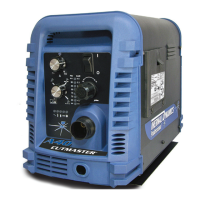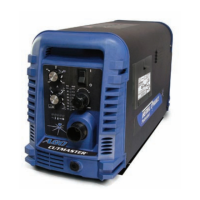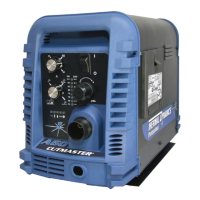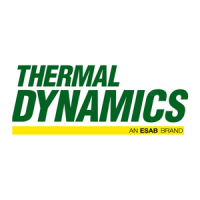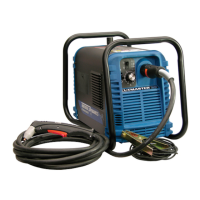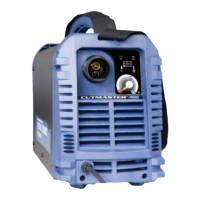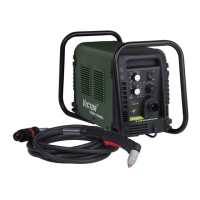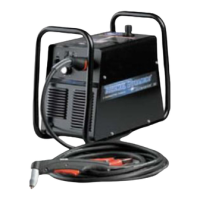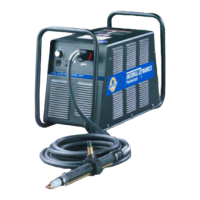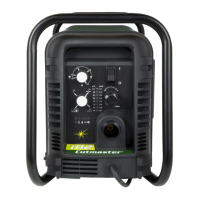CUTMASTER A120
OPERATION 4T-4 Manual 0-4989
Bottom Dross Buildup
Molten material which is not blown out of the
cut area and resolidifies on the plate. Excessive
dross may require secondary cleanup opera-
tions after cutting.
Kerf Width
The width of the cut (or the width of material
removed during the cut).
Top Spatter (Dross)
Top spatter or dross on the top of the cut caused
by slow travel speed, excess cutting height, or
cutting tip whose orifice has become elongated.
4T.05 General Cutting Information
!
WARNING
Disconnect primary power at the source be-
fore disassembling the power supply, torch,
or torch leads.
Frequently review the Important Safety Pre-
cautions at the front of this manual. Be sure
the operator is equipped with proper gloves,
clothing, eye and ear protection. Make sure no
part of the operator’s body comes into contact
with the workpiece while the torch is activated.
CAUTION
Sparks from the cutting process can cause
damage to coated, painted, and other surfac-
es such as glass, plastic and metal.
NOTE
Handle torch leads with care and protect
them from damage.
Piloting
Piloting is harder on parts life than actual cut-
ting because the pilot arc is directed from the
electrode to the tip rather than to a workpiece.
Whenever possible, avoid excessive pilot arc
time to improve parts life.
Torch Standoff
Improper standoff (the distance between the
torch tip and workpiece) can adversely affect
tip life as well as shield cup life. Standoff may
also significantly affect the bevel angle. Re-
ducing standoff will generally result in a more
square cut.
Edge Starting
For edge starts, hold the torch perpendicular to
the workpiece with the front of the tip near (not
touching) the edge of the workpiece at the point
where the cut is to start. When starting at the
edge of the plate, do not pause at the edge and
force the arc to "reach" for the edge of the metal.
Establish the cutting arc as quickly as possible.
Direction of Cut
In the torches, the plasma gas stream swirls as
it leaves the torch to maintain a smooth column
of gas. This swirl effect results in one side of a
cut being more square than the other. Viewed
along the direction of travel, the right side of
the cut is more square than the left.
Right Side
Cut Angle
Cut Angle
A-00512
Side Characteristics Of Cut
To make a square - edged cut along an inside
diameter of a circle, the torch should move
counterclockwise around the circle. To keep
the square edge along an outside diameter cut,
the torch should travel in a clockwise direction.
Dross
When dross is present on carbon steel, it is com-
monly referred to as either “high speed, slow
speed, or top dross”. Dross present on top of
the plate is normally caused by too great a torch
to plate distance. "Top dross" is normally very
easy to remove and can often be wiped off with
a welding glove. "Slow speed dross" is normally
present on the bottom edge of the plate. It can
vary from a light to heavy bead, but does not
adhere tightly to the cut edge, and can be easily
scraped off. "High speed dross" usually forms
a narrow bead along the bottom of the cut edge
and is very difficult to remove. When cutting
a troublesome steel, it is sometimes useful to
reduce the cutting speed to produce "slow speed
dross". Any resultant cleanup can be accom-
plished by scraping, not grinding.
